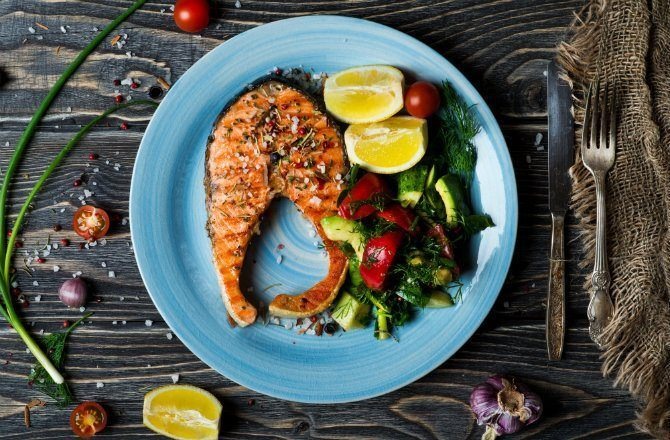Grilling Tips For Hosting A 4th Of July Seafood Feast
The Fourth of July is here, and if you're tired of grilling the same ribs, steaks, chicken, and hot dogs, then 86 those and grill a seafood feast. Ben Pollinger, executive chef of Oceana in New York City, author of recently published book School of Fish, and chef ambassador for Maine Lobster, is here to offer five great grilling tips to help you along the way.
As Pollinger puts it: "Grilling is the perfect way to answer the question of what to cook for a crowd during the summer, when everyone wants to be outside. Certain types of fish are trickier than others, but almost anything can be thrown on the grill — shellfish, whole fish, steaks, and fillets. And don't worry about fancy sauces to go with your finished product. Lemon, olive oil, and hot sauce are all you really need. If you are looking for an accompaniment, fresh salsas are great, because the sweet, sour, and herbal notes in the salsa really complement the charred flavor of the fish."
Here are a few essential tips for grilling your seafood:
1. The keys to foolproof grilling are a clean grill to prevent sticking and "off" flavors, achieving the right temperature, and avoiding flare-ups. Before grilling, preheat the grill and scrub the grates well with a sturdy wire grill brush. You'll also want to oil the grates. The easiest way to do this is with oil-soaked paper towels.
2. Grilling times and temperatures will vary depending on the type of fish, its density or flakiness, and its thickness. Meaty, dense fish (tuna, wahoo, mahi mahi, swordfish) will take longer to cook than lighter, flakier fish (cod, halibut). Start by cooking the fish over high heat, but if the fish is browning too fast, lower the heat to medium-high.
Pro tip: I sometimes work with two zones of heat — I heat half the grill to high, half to low. I start on high, get those nice crosshatch patterns, and then move it to low heat to finish. If you find that your grill is flaring up on high, the two-level approach is the way to go. Just keep shifting the fish to low when the grill flares up.
3. Meaty fish are ideal for grilling because they hold together well and are easy to handle. For salmon, use lower heat — salmon has a high fat content and the fat will melt and cause flare-ups if the heat is too high.
4. Delicate, flaky fish pose more of a challenge for grillers because they fall apart easily. I recommend using a 5-by-12-inch grill basket that encloses the fish on both sides for fillets, steaks, and small whole fish. Make sure to oil the grill basket or spray with nonstick spray to prevent the fish from sticking. If you do not have a basket, you can use a wide metal spatula for turning the fish.
5. To achieve that crosshatch pattern that we make in a restaurant kitchens, place your fish on the grill at an angle to the grates. Let the fish cook until it's marked with rich brown lines, which will take two to four minutes, depending on your grill. Then, turn the dish 90 degrees and cook an additional two to four minutes, until you've achieved your crosshatch. Flip the fish and do the same on the other side until the fish is cooked.
Bonus tip: Afterwards, leave the grill on high for a few minutes to burn of any remaining bits of food. Scrub the grates with the wire brush and turn off the grill.
